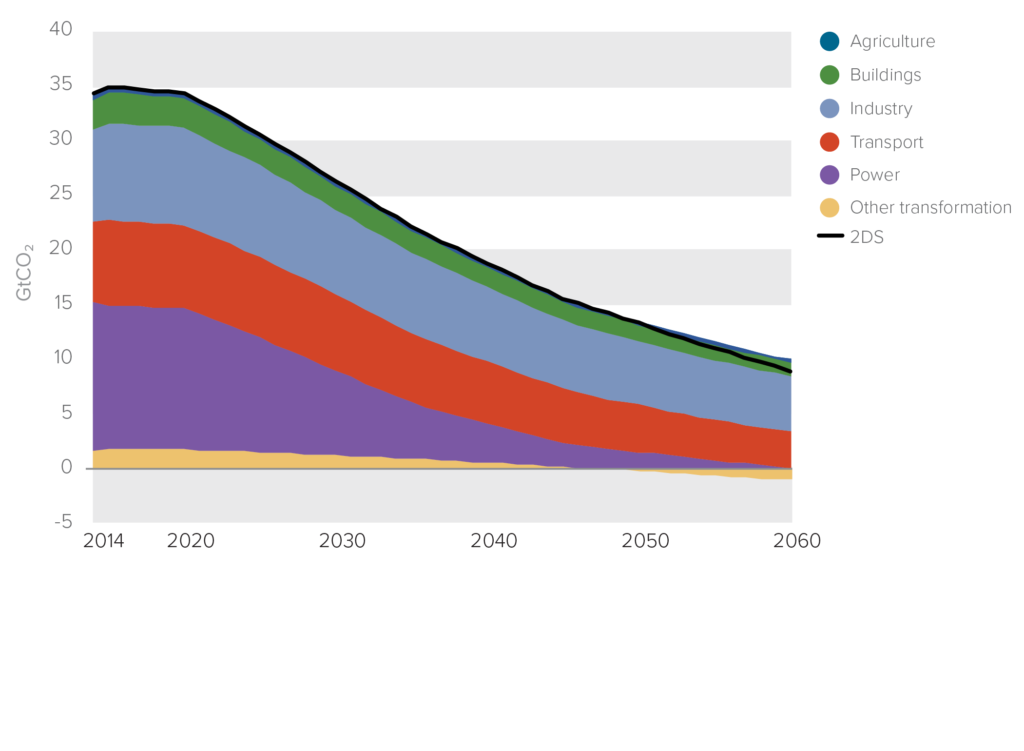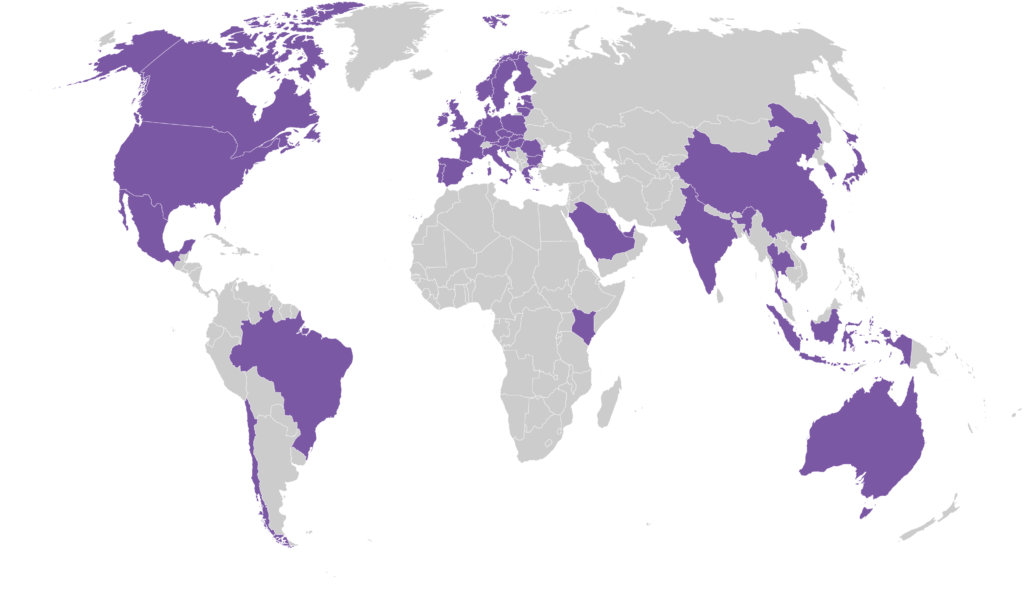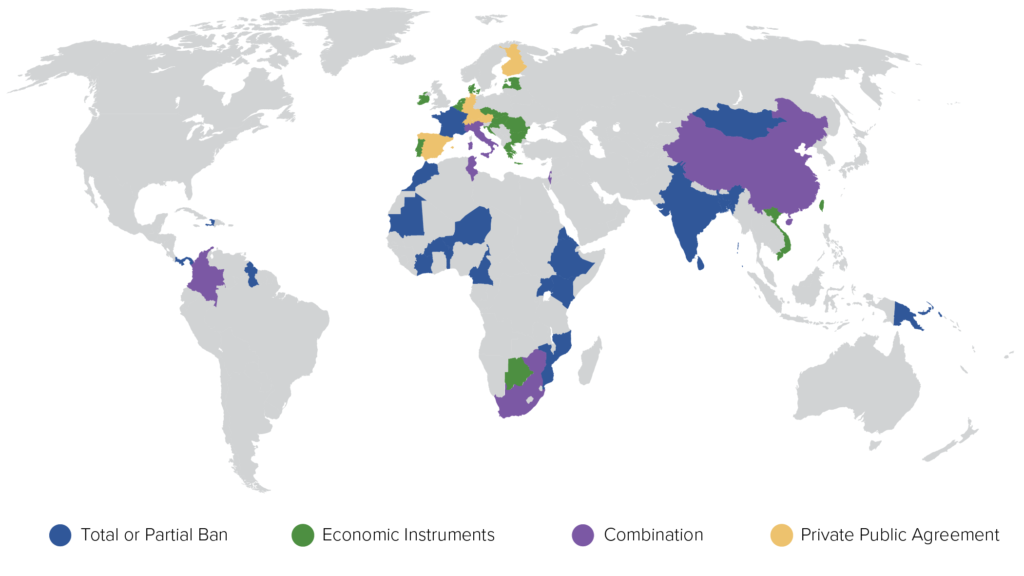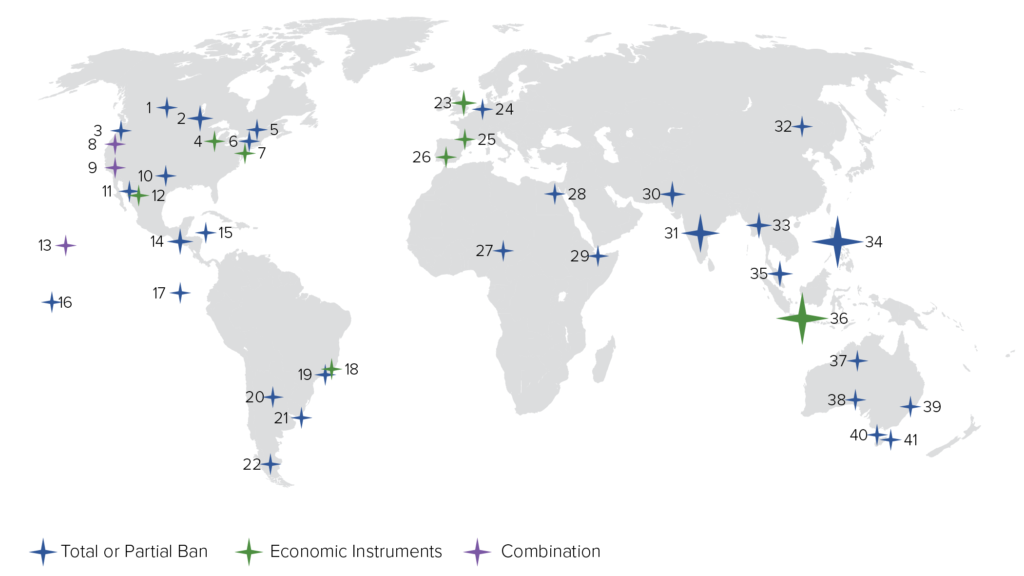Section fiveIndustry
Introduction
Our economies are the heirs of the first industrial revolution, driven by the use of hydrocarbons. The coming industrial transformation must take us beyond the era of fossil fuels and develop sustainable solutions to feed, house, and provide access to clean water, employment, and industrial goods to 10 billion people by 2050.1 In a world of finite resources, growing demand for goods and services will call for transitioning to renewable energy sources and greater resource efficiency.
Achieving the 17 SDGs could open up a market opportunity of US$12 trillion by 2030 in four major economic systems – food and agriculture, cities, energy and materials, and health and well-being – by 2030.2 Across all these sectors, the development and deployment at scale of innovative technologies, business models, and policy approaches will be essential to accelerate progress. There is also particularly significant potential for innovation deployment in small and medium-sized enterprises as well as SOEs. Governments and business must work in tandem to achieve the full potential of this transformation.
First, governments and businesses must proactively anticipate these changes and act early to boost innovation, build their competitive advantage, and avoid economic or social losses. Proactive and ambitious action will be critical given the potential of this transition to trigger a major restructuring of the value chains and shifts in the geographical locations of several key economic sectors, such as steel, chemicals, and automotives, just as cost competition has shifted some industrial activities to emerging and developing economies in recent decades. To strengthen industries and create jobs in the upcoming green industry revolution, countries, and companies have an interest in building their competitive advantage early and benefiting from the increased economic productivity triggered by innovation (see also Box 6). China, for instance, is already positioned as a leader in green industries and transport: Sixty-eight of the 200 publicly traded companies with greatest revenues from clean energy in the world in early 2018 were Chinese companies.3
Digital technologies and innovations, such as dematerialised services, the ‘Internet of Things’, blockchain, and AI, have the potential to radically increase efficiency and enable new business models across all sectors: from smart home appliances that reduce energy consumption and ease dependence on the grid to the use of blockchains to enable traceability of sustainable food and land-use products. As these proliferate, policy-makers must, in parallel, put in place strong social safety nets, as well as educational, distributional, regulatory, and other policies to ensure that societies benefit from the far-reaching effects of these new technologies.
Second, enhanced government support for research, development, and deployment (RD&D) and the careful use of targeted and time-bound industrial policies can help drive the development and scaling of low-carbon and climate-resilient solutions and rapidly bring down their costs to competitive levels. This was a key component benefitting innovations around wind, solar, batteries, and EVs. Supporting RD&D efforts and subsidising early deployment significantly helped to get industries to the stage where scale was achievable, which, in turn, enabled cost reductions and learning curve effects. But energy-sector public RD&D in 2016 was less than half of what it was in the late 1970s in real terms, with a share still going to high-polluting, fossil fuel exploration and production.4
Third, efforts must be made to understand and tackle the specific innovation challenges facing key high-emitting sectors of the economy, particularly heavy industry (in particular steel, cement, and plastics) and heavy-duty transport (heavy road transport, shipping, and aviation), which will constitute the vast majority of remaining CO2 emissions by 2040 in an under 2˚C scenario.5 These ‘tough-to-crack’ sectors jointly contribute 13 Gt of emissions annually, roughly the equivalent of annual emissions from China and India together.6 This number is unlikely to reduce significantly as demand for industrial products and mobility continues to grow in emerging economies.7 But there are exciting innovations that can help bend the curve. The best available technologies, for instance, if deployed globally could keep energy consumption from heavy industry flat, despite steady growth in demand.8 A key challenge, however, is to deploy these innovations in newly industrialising countries. Other, more radical process innovations or substitutes that are not yet cost competitive could be boosted through the application of a carbon price and by the continued fall in the cost of renewables, putting the electrification of heavy road transport or shipping within reach with potentially large benefits for human health due to reduced air pollution (see also Section 1.A).9 There are also fruitful business opportunities to applying the circular economy approach to these sectors, for instance, increasing the reuse and recycling of carbon-intensive materials, such as steel and plastics, or product re-design and increasing the usage of more resource-intensive existing goods, such as switching from car ownership to new mobility services.
While decarbonising industry will be challenging, there is a wealth of experience from countries already taking action. In Europe, the significant reductions in emissions in recent decades came in part from a relocation of industrial activities to non-OECD countries but, more significantly, from a combination of major efficiency improvements (especially in restructured iron and steel plants), changes in energy sources (switching to biomass and waste), and changes in consumption patterns.10
 The 2018 Report of the Global Commission on the Economy and Climate
The 2018 Report of the Global Commission on the Economy and Climate


